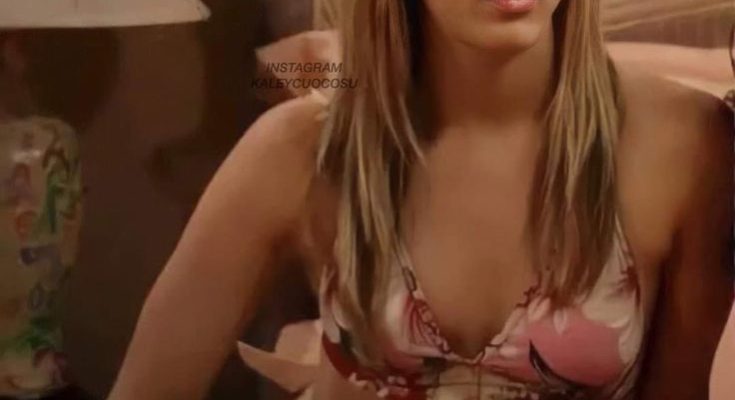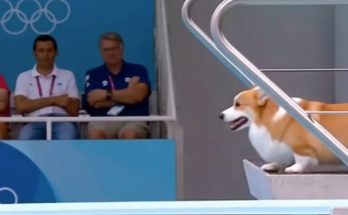What do you get when you mix the cool, easygoing charisma of Henry Winkler with the unpredictable, scene-stealing energy of a young Michael Keaton? The result is nothing short of pure comedic magic. Released in 1982 and directed by Ron Howard, Night Shift quickly cemented itself as a cult favorite among ’80s comedy lovers.
Filled with big names, memorable cameos, and behind-the-scenes tidbits that continue to fascinate fans, Night Shift not only kickstarted Michael Keaton’s film career, but it also showcased Ron Howard’s emerging talent as a filmmaker. It’s a movie brimming with bizarre adventures, offbeat humor, and a surprising cameo by a then-unknown Kevin Costner—not to mention a particularly delightful “kitchen moment” courtesy of Shelley Long.
Ready to revisit this classic? Let’s jump into some of the most intriguing secrets behind Night Shift and find out why it still resonates with audiences today.
1. A Morgue, a Business Venture, and a Lot of Mayhem
Night Shift takes place in a New York City morgue, where mild-mannered Chuck Lumley (Henry Winkler) finds himself working the graveyard shift. Enter Bill Blazejowski (Michael Keaton), his eccentric and wildly ambitious coworker who dreams big—no matter how outrageous the plan.
When the pair stumbles upon an unexpected business opportunity—using the morgue as a secret base for a high-end escort service—they’re catapulted into one hilarious situation after another. From transforming a place of the dead into a hot spot for lively escapades, to navigating the moral and legal pitfalls of their new scheme, every twist pushes the boundaries of comedy.
What makes Night Shift a standout is more than just the unconventional storyline; it’s the dynamic chemistry among its three leads. Henry Winkler, Michael Keaton, and Shelley Long each bring an endearing spark to their characters, making the film a joy to watch.
2. The Birth of a Breakout Star: Michael Keaton
It’s impossible to talk about Night Shift without shining a spotlight on Michael Keaton’s breakthrough performance. Before taking on the role of Bill Blazejowski, Keaton was relatively unknown, having appeared only in a minor comedy film and a short-lived CBS series, Report to Murphy.
Keaton later recalled the grueling process of auditioning for the part:
Yet his persistence paid off. Armed with an Irish charm, thinning brown hair, and quick-witted comedic timing, Michael Keaton was exactly who the film needed to inject frenetic energy into Bill Blazejowski. Keaton’s approach was so spontaneous that it often felt like he improvised half his lines (and sometimes, he actually did).
To get into the proper headspace for Bill’s larger-than-life persona, Keaton would blast Bruce Springsteen’s “10th Avenue Freeze-Out” from the Born to Run album before shooting. The strategy worked—his performance was a scene-stealer that rocketed him to the forefront of Hollywood’s radar.
Keaton’s personal opening-day ritual
When Night Shift premiered, Keaton opted to see the film on his own. He slipped into a theater in the afternoon, choosing to experience the audience’s reaction without any distractions. Looking back, he described the experience as nothing short of “wonderful.”
3. Henry Winkler’s Generous Support
By 1982, Henry Winkler was already a household name from his role as “The Fonz” on Happy Days. Given his high profile, the production team let Winkler pick which Night Shift character he wanted to play. He surprised everyone by choosing the more subdued Chuck Lumley—intentionally steering away from his familiar “tough guy” image.
This decision not only demonstrated Winkler’s range but also opened the door for Keaton to showcase his comedic prowess in the flashier role of Bill. According to director Ron Howard:
Instead of competing for the spotlight, Winkler offered invaluable advice to his younger co-star, even suggesting moments where Keaton could “take it one step further” to maximize comedic effect. Their dynamic chemistry was no accident: Henry’s initial discomfort around Michael mirrored Chuck’s onscreen wariness toward Bill—giving the film an authentic push-pull tension that served the story perfectly.
4. Almost-Casts: The Role That Eluded Comedy Legends
Looking back, it’s fascinating to think that Michael Keaton almost didn’t land the part that launched his career. Ron Howard initially eyed iconic comedians like John Belushi, Dan Aykroyd, Bill Murray, and even John Candy for the Bill Blazejowski role. Yet, for various reasons—whether the script seemed too small or the timing wasn’t right—none of them accepted the role.
Meanwhile, Kurt Russell and Mickey Rourke also auditioned for Bill Blazejowski. In the end, it was writer Lowell Ganz who vouched for Keaton, telling Ron Howard,
5. Improvisation Gold
One of Night Shift’s most memorable—and hysterical—bits of improvisation happens when Chuck and Bill encounter a blind man asking for spare change. Instead of handing him loose coins, Bill casually writes out a check. It’s a blink-and-you’ll-miss-it moment, but it embodies the offbeat humor that Keaton brought to the role.
6. Ron Howard’s Cameo and Other Familiar Faces
While Night Shift is known as Ron Howard’s big transition from actor to director, old habits die hard. Eagle-eyed viewers can spot Howard and his wife, Cheryl, sharing a kiss in front of Chuck’s apartment building. That’s not the only cameo; the annoying saxophonist you see in a subway scene? That’s Ron Howard himself making another sly appearance.
Moreover, no Ron Howard film is complete without a cameo from his brother, Clint Howard, who appears as Jeffrey, a quirky supporting character. These little Howard family Easter eggs have become a tradition in many of Ron’s projects.
7. Kevin Costner’s Blink-and-You-Miss-It Appearance
Before winning Oscars and becoming a leading man, Kevin Costner had a fleeting role in Night Shift. During a raucous morgue party scene, Costner can be spotted as a frat boy with a cup in hand, wearing a checkered shirt and a collegiate sweater around his waist. He doesn’t utter a single line, but it’s a fun “Where’s Waldo?” moment for fans who know his face from later hits like The Untouchables and Dances with Wolves.
And if Kevin Costner wasn’t enough, a very young Shannen Doherty also pops up as a Girl Scout-like “Blue Bell” in an elevator scene—delivering just a single line that marked her first big-screen appearance.
8. A Soundtrack Surprise: The Birth of “That’s What Friends Are For”
Long before Dionne Warwick, Elton John, Gladys Knight, and Stevie Wonder made “That’s What Friends Are For” a Grammy-winning anthem, the song debuted in Night Shift. For the 1982 movie soundtrack, Rod Stewart was the first to record this now-classic tune.
When the star-studded version hit the airwaves in 1986, it soared to the top of the charts and raised millions for AIDS research—a testament to how a film cameo can spark an enduring musical legacy.
Besides that, the movie opens with the catchy “Night Shift” theme by Quarterflash and features notable tracks like Van Halen’s “You Really Got Me” and a live version of “Jumpin’ Jack Flash” by The Rolling Stones.
9. Shelley Long’s Hesitation and Transformation
Shelley Long plays Belinda, the charming yet no-nonsense sex worker who lives next door to Chuck. Her character not only becomes the heart of the film but also the catalyst for Chuck’s transformation from pushover to partner-in-crime.
Interestingly, Long was initially hesitant to take on the role of a prostitute. She was known for her sweet, wholesome demeanor, and she wasn’t sure if portraying a call girl aligned with her image. But after thorough research and conversations with Ron Howard—who was impressed by her comedic timing in Caveman (1981)—Long decided to take the plunge.
She even showed up to her audition dressed in her interpretation of Belinda’s attire, reading scenes with Winkler that “cooked” right from the start. Critics would later dub Belinda the “happiest, most wholesome hooker” on screen—a label that tickled Long, given her initial reservations.
10. The Unforgettable “Magic in the Kitchen” Moment
One of the film’s most iconic scenes unfolds when Shelley Long’s character decides to whip up breakfast for Chuck while wearing a rather revealing outfit. Chuck, who’s usually flustered by just about everything Bill does, finds himself speechless when he catches Belinda in the kitchen.
Though Chuck specifically asks for scrambled eggs, Belinda is visibly frying them in the pan. Yet, somehow—like actual movie magic—those fried eggs morph into perfectly scrambled ones by the time they hit the plate. It’s a continuity slip that’s easy to spot on rewatch, but it hardly matters when the scene itself is so endearing (and undeniably funny).
11. Shannen Doherty’s “Bluebird” (or was it “Bluebell”?)
Speaking of details, one minor slip occurs during Shannen Doherty’s brief cameo. In the credits, she’s listed as a “Bluebird,” but Chuck mistakenly calls her a “Bluebell.” It’s a small goof, but it underscores the playful, slightly chaotic nature of Night Shift—a film that never takes itself too seriously.
12. Shelley Long’s Take on Underwear Scenes
While her character Belinda confidently strides around in lingerie, Shelley Long wasn’t quite as comfortable off-camera. She admitted that when the cameras weren’t rolling, she found the minimal wardrobe a bit awkward. But her husband, apparently, had no complaints:
“He didn’t have trouble with me running around in my skivvies—that’s a part of my anatomy he likes,”
she joked in an interview.
13. New York City: Facts vs. Fiction
Although much of Night Shift was filmed around Times Square and other Manhattan locations, the morgue setting was a specially designed set in Los Angeles. One particular continuity error happens when Bill announces “this is my stop” on a Times Square–Grand Central shuttle—which actually doesn’t have any stops in between. It’s one of those classic goofs that only New Yorkers (or keen-eyed viewers) tend to notice.
14. Why This Comedy Still Works
A major factor behind Night Shift’s enduring appeal is the genuine camaraderie among its core trio. Henry Winkler, Shelley Long, and Michael Keaton bring heart, humor, and a sense of spontaneity to their scenes. Whether it’s Chuck’s shy reluctance, Belinda’s unflappable warmth, or Bill’s irrepressible zest for life, each character is likable and relatable in their own way.
Underneath all the hijinks—like running a makeshift escort service in a morgue—Night Shift also explores themes of friendship, personal growth, and stepping out of your comfort zone. Chuck ultimately learns to stand up for himself, Belinda finds someone who respects her beyond her work, and Bill discovers that not all of his big ideas are guaranteed winners (though he’ll never stop trying).
The film is a testament to how a talented cast, a fresh director (Ron Howard at the time), and a quirky premise can turn a modest comedy into a time capsule of the 1980s.
15. Your Favorite “Night Shift” Moments?
From Michael Keaton’s ad-libbed check-writing scene to Shelley Long’s magically scrambled eggs, Night Shift brims with laughter and memorable lines. The cameo appearances by soon-to-be megastars Kevin Costner and Shannen Doherty only add to the fun for those who love a good Easter egg hunt.
The film’s legacy remains strong because it’s more than just an ’80s comedy. It’s a story about forging unexpected friendships in the unlikeliest of places—complete with a soundtrack that introduced a future chart-topper, and performances that paved the way for Hollywood careers.
So, what’s your favorite moment from this 80s classic? Is it the wild morgue party? Shelley Long’s comedic timing in the kitchen? Or perhaps the sheer audacity of Michael Keaton’s Bill Blazejowski?
Share and Reminisce
If you’ve enjoyed this look back at Night Shift, don’t keep it to yourself! Share the article with friends who appreciate a dose of ’80s nostalgia, and invite them to rediscover the quirky charm of Ron Howard’s comedic directorial debut. Whether you’re a fan of Henry Winkler, Shelley Long, or Michael Keaton, there’s something truly timeless about this comedy gem that never fails to bring the laughs.
Night Shift may have flown under the radar compared to other 1980s blockbusters, but it has rightfully earned its spot as a cult classic. Even decades later, it remains a must-watch for fans of offbeat comedies and for those curious about the early days of some of Hollywood’s biggest names. Give it a rewatch—you just might catch new details (and more continuity slip-ups) that you missed the first time around!



